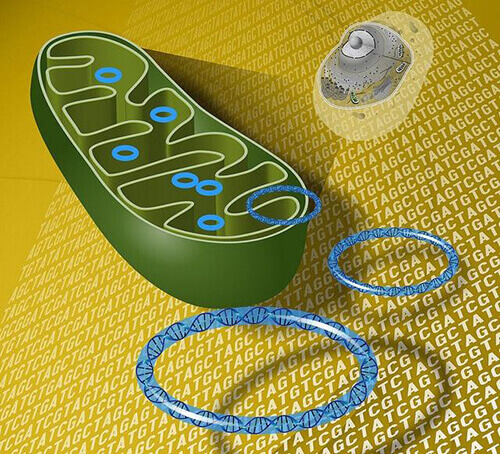



Business Inquiry
Global:
Email:marketing@medicilon.com
+1(781)535-1428(U.S.)
0044 7790 816 954 (Europe)
China:
Email: marketing@medicilon.com.cn
Tel: +86 (21) 5859-1500



In recent years, ongoing research has continually shown that an increased number of autism spectrum disorder (ASD) cases are inextricably linked to greater numbers of harmful mutations within mitochondrial DNA (mtDNA) than other unaffected members of their immediate family—yet, the biological basis for this relationship has remained unclear. Now, investigators at Cornell University in Ithaca have performed an extensive genomic study to evaluate genetic variations in mtDNA among ASD patients, including the mixture of different mtDNA molecules within the same individual—a genetic scenario called heteroplasmy.

“We evaluated mtDNA variation, including the mixture of different mtDNA molecules in the same individual (i.e., heteroplasmy), using whole-exome sequencing data from mother-proband-sibling trios from simplex families (n = 903) where only one child is affected by ASD,” the Cornell authors wrote.
The researchers discovered a unique pattern of heteroplasmic mutations, where both mutant and normal mitochondrial DNA sequences exist in a single cell. Children with ASD had more than twice as many potentially harmful mutations compared to unaffected siblings and 1.5 times as many mutations that would alter the resulting protein. The researchers went on to show that these mutations can be inherited from the mother or as the result of spontaneous mutations during development.
“We found that heteroplasmic mutations in autistic probands were enriched at non-polymorphic mtDNA sites (P = 0.0015), which were more likely to confer deleterious effects than heteroplasmies at polymorphic mtDNA sites,” the authors penned. “Accordingly, we observed an ~1.5-fold enrichment of nonsynonymous mutations (P = 0.0028) as well as about a ~2.2-fold enrichment of predicted pathogenic mutations (P = 0.0016) in autistic probands compared to their non-autistic siblings. Both nonsynonymous and predicted pathogenic mutations private to probands conferred increased risk of ASD (Odds Ratio, OR[95% CI] = 1.87[1.14–3.11] and 2.55[1.26–5.51], respectively), and their influence on ASD was most pronounced in families with probands showing diminished IQ and/or impaired social behavior compared to their non-autistic siblings.”
The findings from this study were published recently in PLoS Genetics in an article entitled “Genetic Evidence for Elevated Pathogenicity of Mitochondrial DNA Heteroplasmy in Autism Spectrum Disorder.”
The scientists noted that the risk associated with these mutations is most pronounced in children with lower IQ and poor social behavior compared to their unaffected siblings. Carrying harmful mutations in mitochondrial DNA is also associated with increased risk of neurological and developmental problems among children with ASD. Mitochondria play a central role in metabolism, thus these findings may help explain the metabolic disorders commonly associated with ASD and other neurodevelopmental disorders. Evaluating mutations in the mitochondrial DNA of high-risk families could help improve the diagnosis and treatment of these diseases.
“The result of our study synergizes with recent work on ASD, calling attention to children diagnosed with ASD who have one or more developmental abnormalities or related co-morbid clinical conditions for further testing on mitochondrial DNA and mitochondrial function,” stated senior study investigator Zhenglong Gu, Ph.D., associate professor at Cornell University. “Since many neurodevelopmental disorders and related childhood disorders show abnormalities that converge upon mitochondrial dysfunction, and may have mtDNA defects as a common harbinger, future research is needed to elucidate the mitochondrial mechanisms underpinning to these diseases.”
Dr. Gu went on to conclude that “ultimately, understanding the energetic aspects of neurodevelopmental disorders may lead to entirely new kinds of treatments and preventative strategies that would target mitochondria.”
 Relevant
news
Relevant
news